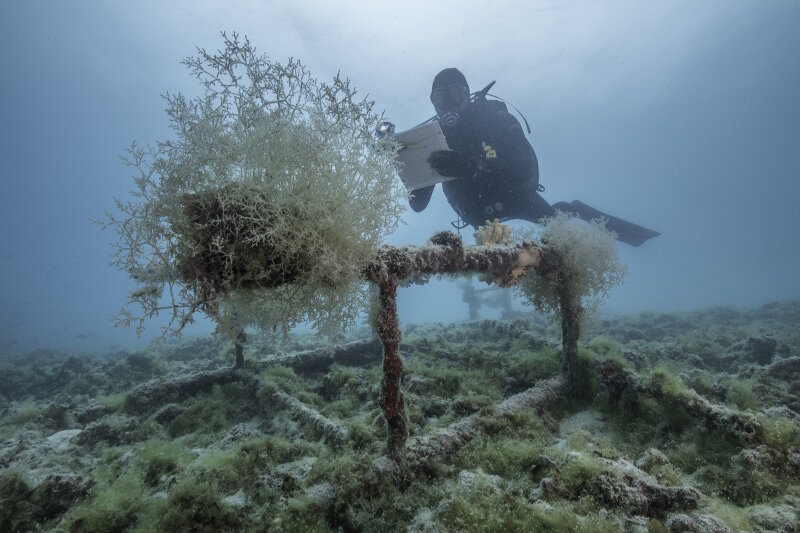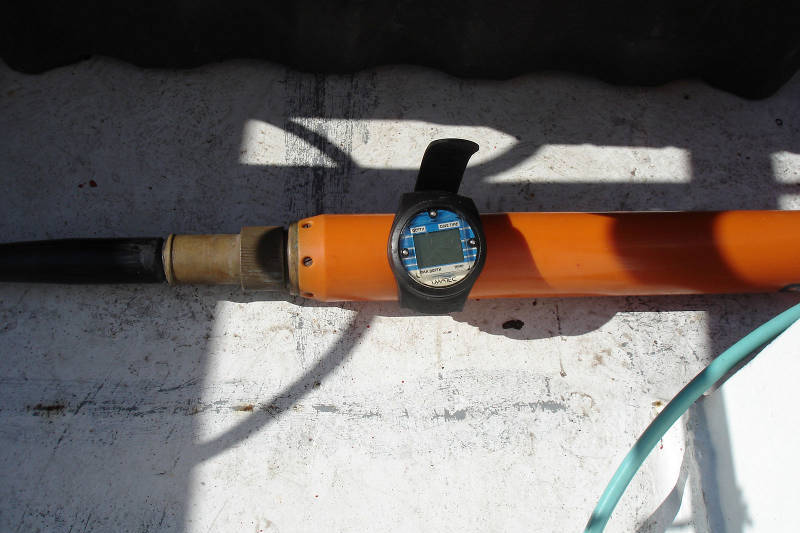Magnetometer
A magnetometer is a passive instrument that measures changes in the Earth’s magnetic field. In ocean exploration, it can be used to survey cultural heritage sites such as ship and aircraft wrecks and to characterize geological features on the seafloor.
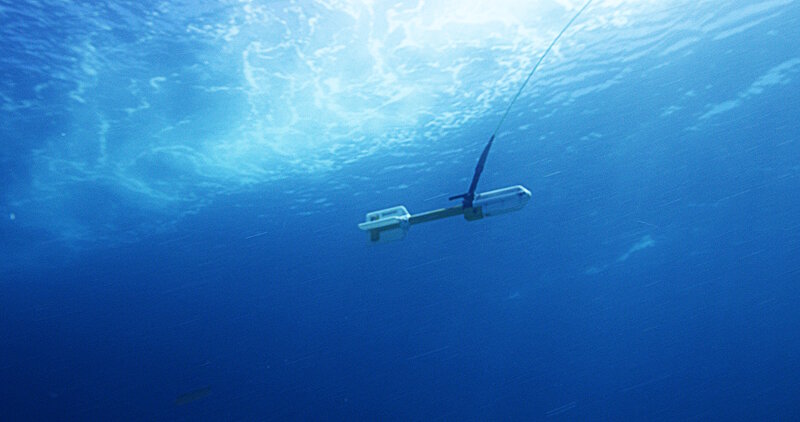
Magnetometer being towed through the water column. Image courtesy of Brett Seymour, National Park Service Submerged Resources Center. Download larger version (jpg, 760 KB).
How does it work?
The Earth’s core contains an outer liquid layer of magnetic iron and nickel. These two elements are magnetic because their atoms contain unpaired electrons, which create a pole that attracts other magnetic objects. As the Earth spins on its axis, the electric currents of these metals generate a field of magnetism. The strength of this field varies across the Earth’s surface and can be measured using a magnetometer.
On an ocean exploration expedition, the magnetometer is often pulled behind the research vessel with a tow cable, although it can also be mounted on an autonomous underwater vehicle (AUV) or aerial drone. The magnetometer samples background magnetism at a rate of about one reading per second, or one hertz (Hz), although the sampling rate can be changed. This number is generally consistent unless the magnetometer detects something ferrous (containing iron), like a ship hull fragment, an anchor, or a geological formation of basalt. This registers as an unexpected change in magnetism, or an anomaly, on the magnetometer’s display. This tool can detect artifacts and even shipwrecks, whether they are exposed above the seafloor or completely buried.
What happens next?
Magnetometer data is collected with corresponding latitude/longitude position data from a GPS and processed to create a map. The resulting contour map displays the magnetism of the survey area and potential targets are seen as steep gradients or rapid changes in magnetism. The next step of the archaeological process is to send divers or a remotely operated vehicle (ROV) down to confirm the presence of artifacts and take photos. If something is found, the images can be stitched together to create a photo mosaic or three dimensional model using photogrammetry software.
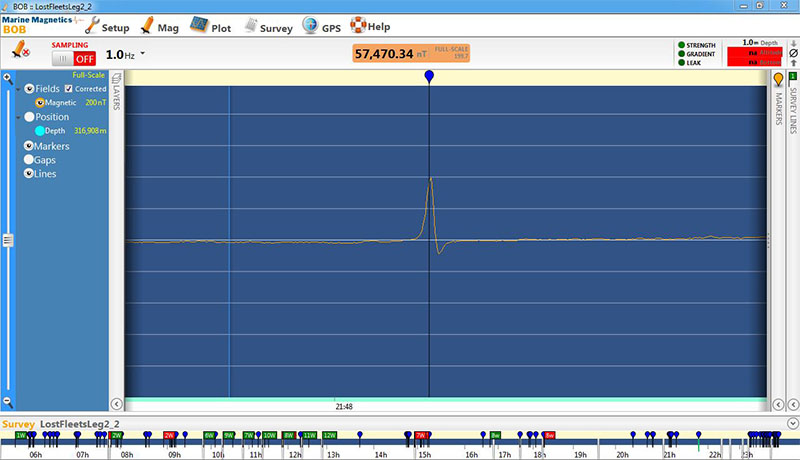
Magnetometer readout image of a single dipole, likely a small isolated object. Image courtesy of NOAA/ONMS/Matthew Lawrence. Download larger version (jpg, 166 KB).
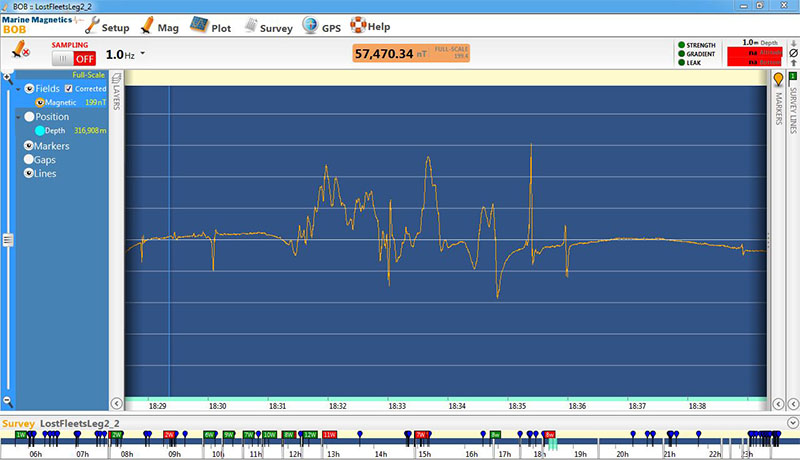
Magnetometer readout image of multiple anomalies grouped together that likely represents a mass of material. Image courtesy of NOAA/ONMS/Matthew Lawrence. Download larger version (jpg, 190 KB).
Why is it important?
The magnetometer is one of many tools needed to search for cultural heritage sites. It is often used in tandem with side scan sonar, which produces a map by bouncing sound waves off of seafloor features. However, unlike the magnetometer, sonar cannot pick up on artifacts that are buried below the seafloor.
Maps created with the magnetometer and sonar help indicate the spatial relationships of wreck fragments. Sometimes archaeologists have limited background information about the site they are exploring; examining the layout of a wreck can fill in gaps of knowledge. The magnetometer helps reveal the full story of cultural heritage sites that would otherwise remain untold.
